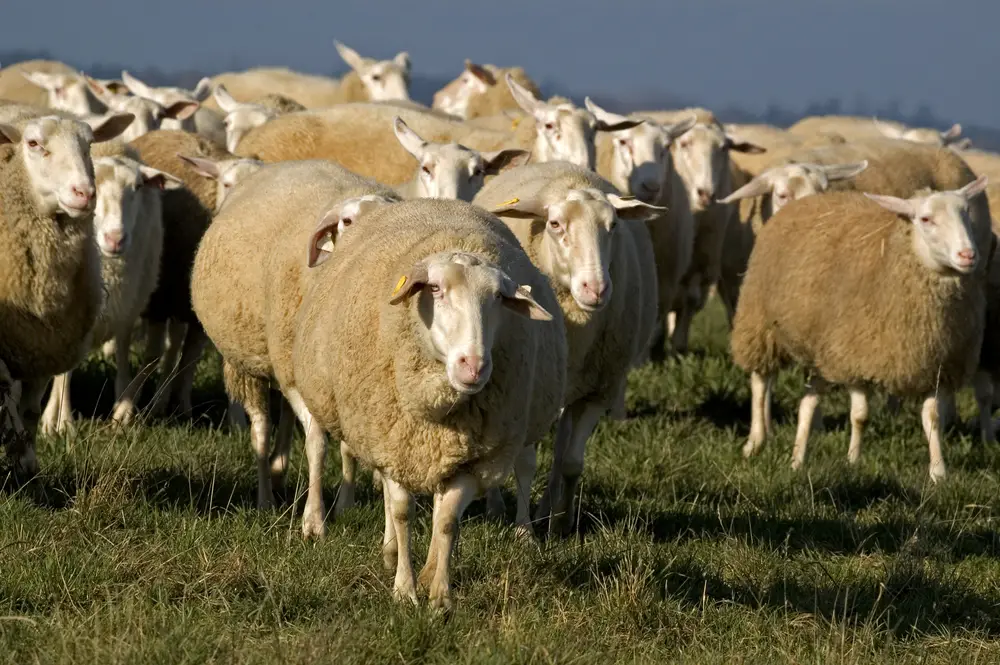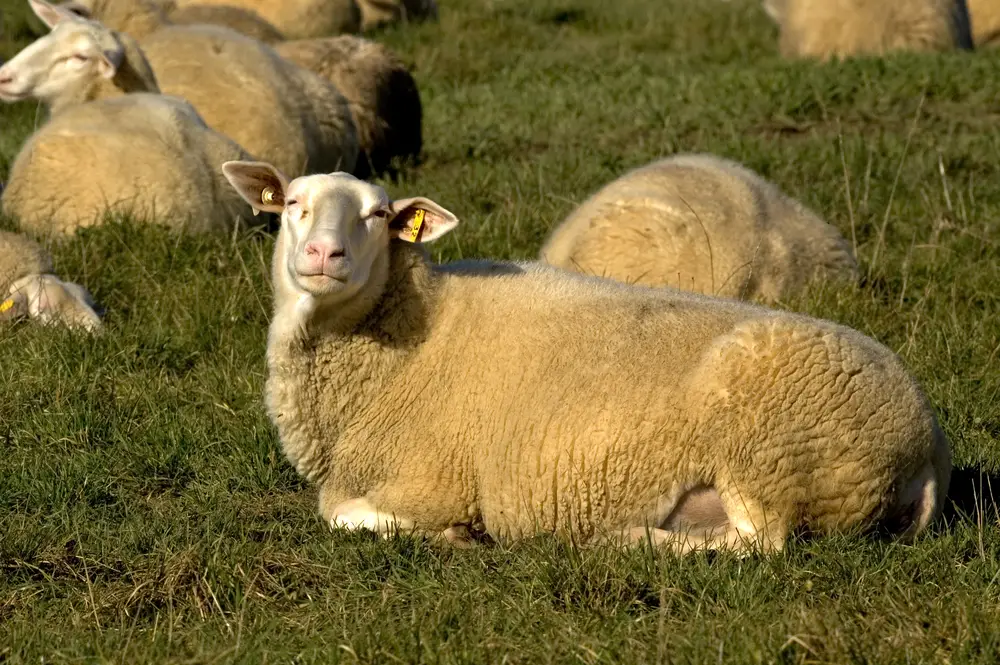The East Friesian sheep is a dairy sheep that comes from Northern Germany and the Friesland province of the Netherlands near Holland. As the highest milk production sheep in terms of milk yield, East Friesian sheep are the preferred milk sheep of choice for many small-scale farms.
This article will introduce the history of the East Friesian sheep, their breed characteristics, and examine the qualities of their milk production and wool in detail. You’ll also discover their attributes and benefits, so you can decide if this is the right breed for your farm.
Table of Contents
Where Does The East Friesian Sheep Come From?
East Friesian sheep originate from the Friesland area and are an older sheep breed that wasn’t frequently traded until the 19th century. They were developed alongside Holstein cows (also a dairy producing animal) through centuries of selective breeding.
East Friesian sheep weren’t introduced to North America until the 1990’s, primarily because they don’t do well in non-native climates.
In order to thrive in Canada and the United States, they had to be crossbred with local sheep that had stronger constitutions and adaptability.
One of the most successful crossbreeding attempts occurred in Wisconsin when East Friesian sheep were crossbred with Lacaune sheep producing sheep that thrived in the climate of Wisconsin and retained the East Friesian milk production qualities.
Milk producers and breeders maintain an interest in using East Friesian sheep despite the challenges of raising them – primarily in crossbreeding programs.
East Friesian Sheep Breed Characteristics
Few official breed characteristics exist because this sheep has been crossbred with so many other sheep varieties so their appearance can be varied.
| Characteristics | Description |
| Origin | Northern Germany and the Friesland province of the Netherlands near Holland |
| Appearance | East Friesian Sheep have white, open faces and pink noses while their bodies are covered in white wool of a medium length, that has a crimped texture. Both genders are polled and tend to have pale hooves. They do have a characteristic thin tail without wool that resembles a rat tail. |
| Wool | Micron range from 29 to 33 USDA wool grade between 46s to 54s Staple length between 4 and 6 inches Grease fleece weight of 9 to 12 pounds Yield between 55 to 65 percent |
| Weight | Rams weigh between 225 and 270 pounds Ewes weigh between 160 and 180 pounds |
| Fertility | Will birth multiple lambs, yet mothers will wander off from their babies which are typically bottle-fed |
| Meat | Average |
| Environment | They do not like to be part of large flocks and require specialized conditions to thrive. This makes them ill-suited for industrial use. They are not a hardy breed and do not adapt well to varied climates. They are, however, suited for crossbreeding with local breeds to produce sheep that can survive in a variety of climates and still produce the milk that the East Friesian sheep is known for. Their life expectancy is 10 to 12 years. |
| Common Uses | Milk production |

What Kind Of Fleece Does East Friesian Sheep Produce?
East Friesian sheep are not typically used for wool production – however, they do produce a decent amount of white wool that can be used for this purpose.
Is the East Friesian Primarily a Dairy Sheep?
In terms of milk yield, East Friesian dairy sheep are the top producing sheep in the world. For each lambing, the mature ewe produces 500 to 700kg of milk.
In order to obtain the optimal amount of milk from this milking breed, lambs are removed from the mother soon after birth and given bottled milk.
The mature ewe has a lactation period of 200 to 300 days, and during this time, she is milked several times daily to collect her milk.
This dairy ewe’s milk contains a milk fat percentage of 6 to 7 percent which is higher than any other dairy breed. It is well-suited for cheese making.
For these reasons, this sheep is expensive and hard to find as a purebred because they are so desirable. Most East Friesian sheep will cost upwards of $1000 each, and may need to be imported, which adds significantly to their cost.
Why Should I Raise East Friesian Sheep?
There are many reasons why you should consider raising East Friesian Sheep on your sheep farm:
- These sheep have high prolificacy and birth multiple lambs
- Highest milk production of any dairy breeds with highest milk fat percentage
- Docile and intelligent, these sheep are easy to handle and can have dog-like behavior
- Can be crossbred with local sheep breeds and pass on milk production genes
- Can be used for non-dairy purposes as their wool is plentiful
- Mothers will wander off from their babies, so it is easy to separate lambs for bottle feeding
- Their wool has high lanolin content, making it ideal for spinning
- Non-territorial and do well with other animals
- Natural grazers and great for landscape management

